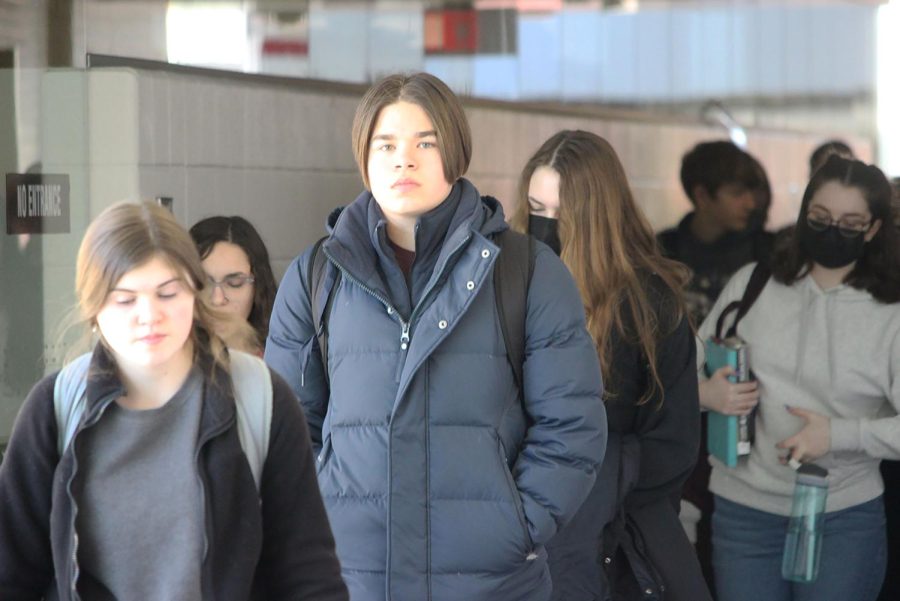USD 383 lifts mask mandate for K-12 schools
Sophomore Charles Keenan walks among other MHS students, some masked and some unmasked, after the mandate was lifted on Feb. 24.
February 18, 2022
USD 383 entered their first maskless week since pre-COVID for middle and elementary students and the beginning of the second semester for high school students last Tuesday, Feb. 22. The Board of Education voted to amend the Pandemic Response Plan to make masking optional during their board meeting on Feb. 15 in a motion that carried 6-1.
“We’re another place now where…our numbers have improved,” superintendent Marvin Wade said at the Feb. 15 meeting. “All of the metrics we look at, the numbers that if they went up it was good they have gone up, and the numbers that need to go down to be good, they went down.”
Only Board member Jayme Morris-Hardeman voted in dissent, citing concerns about the longevity of downward COVID-19 metrics and the lag between COVID-19 outbreaks and their representation in data trends. Members Darrel Edie and Brandy Santos, who typically vote to remove masks, were joined by new board member Christine Weixelmann, president Curt Herman, as well as liberals Karla Hagemeister and Kristin Brighton — who was the only dissenting vote when the mask mandate was removed for the high school in November — in removing the requirements.
“For me as a scientist I’m always going to look at data when I make decisions,” board member Morris-Hardeman said at the meeting. “And the datapoint that speaks most strongly to me is the… two-week average wait of positivity in our community. And I’m glad to see that number dropping and it continues to drop and that’s great. But in my mind I don’t think we should stop masking until that number is below two percent for ten percent consecutive weeks.”
The metrics for USD 383 show a decrease in positivity rate from 24.53% in the week of Jan. 23-29 to 13.6% between Feb. 6 and 12, as well as an increased attendance rate from 87.26% to 92.45%. The improvement in metrics combined with the support of the medical advisory board for removing the mandate was enough to sway the board, many of whom cited the medical advisory’s opinion as key to their decision.
“I’m going to stay consistent, all along I’ve always supported what the medical advisory team has advised us to do,” board president Curt Herman said at the meeting. “Based on that, I [have] to stay consistent.”
Optional masking still has some exceptions. Students in early learning centers have not had the opportunity to get vaccinated as most of them are under five years old and will still be required to wear masks, as well as students on transportation and those coming back from quarantine.
The mandate’s removal follows a nation-wide trend of repealing COVID-19 restrictions. New Jersey, Connecticut, Delaware, and Oregon have all put end-dates on their state-wide school mask requirement, and others have done away with masking requirements in public spaces. The policy reversals have been connected to voter discontent with restrictions and the upcoming midterm elections.
Required masking continues to be conditional on COVID-19 case counts and is subject to change as the situation evolves. The board will revisit the Pandemic Response Plan before March 23.


